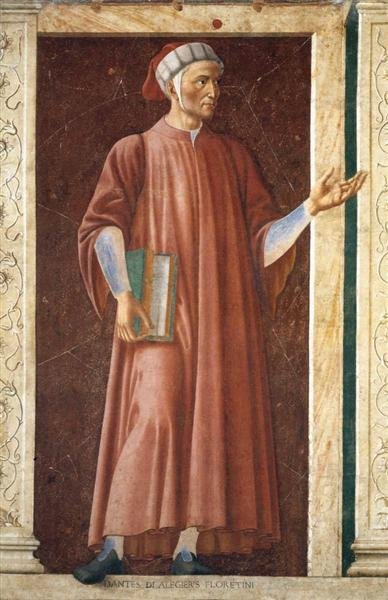The literary movement of the 13th century in Italy - "the sweet new style" /part 2/
The dedication of "stylists" in the conceptual toolkit of medieval philosophy is evident in their frequent handling of terms such as "hidden spirit", "power", "substance". They are obviously occupied by scholasticism and mysticism. Like the scholastics, they assume that the physiological system of man is built up by the three abilities - the intellectual, the perceptual and the vegetative. The most commonly used by stylists are scholastic realities with ethical charge - "virtue," "nobility," "superiority," , "humility," and "compassion," which in their poetry acquire a new one, scientific-research meaning.
Undoubtedly, the stylists are strongly influenced by the extensive analyzes of God's love and manifestations that philosophical mystics conduct in seclusion and naturally cultivate in their spirit a sophisticated lyrical attitude. They carry them in their poems, most often to present within them the exalted, often divided by the suggestions of strict intelligence, a soul in love. Unlike the poets in Bologna, the Florentine poets-stylists are building a united poetic circle whose unity builds on their self-esteem of elite intellectuals and their strong spiritual radiance. Although they stand up for their creative identity, they remain "open" to the influences of their fellow crew members belonging to their creative community. These poets openly admire their pride, due to their rich erudition, and have some disregard for the local, limiting their inspiration, cultural traditions, and with obvious disdain for the harsh manners and crude manners adopted by ordinary people. Contemporary Italian literary historians are unanimous that the poets forming the "Sweet New Style" circle borrow from the preceding poetic schools of Provencal and Sicilian the following attitudes and pictorial techniques:
the glorification of love as the highest form of spiritual aristocracy;
the assertion of true nobility, which is not acquired by birth but cultivated in the spirit of the individual;
the presentation of the beloved lady as a heavenly angel.
But in the "Sweet New Style" circle, the psychological analysis of the love experience is much deeper and more detailed than for Progressives and Sicilians. The stylistic poets take much more zeal in detailing the moods of the loved ones, and make much greater effort in interpreting their behavior. Unlike the Sicilian poets, they reveal the names of their chosen ladies and thus bring more autobiographical detail into the intimate lyric . Maria Garavalia and Giuseppe Bonghi claim that Dante has seen Beatrice, the daughter of Portinari, recently married to Simone Bardi, in 1274 (when he was nine years old, according to his statement in New Life and suddenly fell passionately in love with her. Another honored stylist, Chino of Pistoia, devastates the Dove, and their contemporaries, Guido Cavalcantines, sigh for Giovanna. Each of them strives to present their own love adventure as an extremely important historical event. However, these stylists do not differ particularly in the presentation of "falling in love", their beloved are not outlined by their individual appearance and their own behavior, so their love confessions are perceived rather as metaphors of "revealing their own soul".

I can't believe I read the whole thing. I think I overheated my brain.
So, they were exploring a type of a gentle emotional sensuality style expression that inspires to give rise to elevate their perspective?
this article is great because in this article many things is related with culture
Old is gold.👌👌👌👌👌👌👌👌👌
Posted using Partiko Android
了解了更多的文化历史,谢谢你的分享。
You have recieved a free upvote from minnowpond, Send 0.1 -> 10 SBD with your post url as the memo to recieve an upvote from up to 100 accounts!